PIGMENTS
Canthaxanthin- chemfantin red 10%
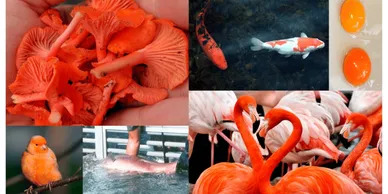
Identifiers
INS No. 161g
E161g
CI Food Orange 8
CAS No 514-78-3
Physical Description
Canthaxanthin occurs as a dark, crystalline powder. It is consists predominantly of trans-ß-carotene-4,4′-dione together with minor amounts of other isomers.
Common Uses
Canthaxanthin is a reddish-orange color primarily used to color the meat of poultry, salmon, and trout and the yolks of eggs indirectly through animal feeds. Canthaxanthin can also be used directly for coloring food such as tomato products, fruit drinks, sausage products and baked goods as well as pharmaceuticals.
Canthaxanthin is used to reduce sensitivity to sunlight (photosensitivity) experienced by people who have a rare genetic disease called erythropoietic protoporphyria (EPP). In these people, sunlight can cause skin reactions such as rash , itch, and eczema. Canthaxanthin is also used to reduce sun sensitivity caused by certain medications and other conditions, but there is no good scientific evidence to support these uses. Orobronze (canthaxanthin) is sold in Canada as a nonprescription “tanning pill.” In the U.S., the Food and Drug Administration (FDA) has not approved tanning pills containing canthaxanthin. Nevertheless, these products seem to be readily available to people in the U.S. through mail order and tanning salons.
Specifications for Food Use
JECFA
US FDA
Commission Regulation (EU) No 23/2012
Codex GSFA Provisions
Canthaxanthin (INS No. 161g) is added to foods and beverages at concentrations up to a maximum permitted level (MPL) as adopted by the Codex Alimentarius Commission. There are more than 30 food categories for which MPLs for canthaxanthin are adopted in the General Standard of Food Additives (GSFA).
Regulatory Approval
JECFA: ADI of 0-0.03 mg/kg (44th report, 1995)
USA: Canthaxanthin is a color additive exemption from certification and permanently listed for coloring foods generally subject to the the following restriction: ≤ 30 mg/lb of solid or semisolid food or per pint of liquid food. It may be safely used in broiler chicken feed (≤ 4.41 mg per kg of complete feed) and in the feed of salmonid fish (≤80 mg per kg of finished feed) subject to specific restrictions (21 CFR 73.75) and at for drug use at levels consistent with GMP for ingested drugs only (21 CFR 73.1075)
EU: 0-0.3 mg/kg ADI (EFSA, 2010) Canthaxanthin is used in medicinal products in accordance with Directive 2009/35/EC.
Safety Reviews
Evaluation of certain food additives and contaminants. (Forty-forth report of the Joint FAO/WHO Expert Committee on Food Additives) WHO Technical Report Series. No. 859, 1995.
Available online
EFSA Panel on Food Additives and Nutrient Sources added to Food (ANS); Scientific Opinion on the reevaluation of canthaxanthin (E 161 g) as a food additive. EFSA Journal 2010; 8(10):1852 [42 pp.].
Available online
beta-Carotenes- chemfoten
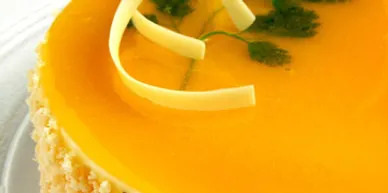
Identifiers
INS No. 160a(i); beta-Carotene (synthetic)
INS No. 160a(ii); Carotenes (vegetable)
INS No. 160a(iii); E160a(iii); beta-Carotene from Blakeslea trispora
INS No. 160(iv); beta-carotene-rich extract from Dunaliella salina
E160a(i); beta-carotene
E160a(ii); plant carotenes
E160a(iv); algal carotenes
CI Food Orange 5
Carotenes
Physical Description
β- Carotene is prepared synthetically or obtained from natural sources. Synthetic β- Carotene occurs as red crystals or as crystalline powder. It consists predominantly of all-trans-β-carotene, but may also contain minor amounts of cis-isomers and other carotenoids such as all-trans-retinal, beta-apo-12′-carotenal, and beta-apo-10′-carotenal.
Carotenes (vegetable) are obtained by solvent extraction of carrots (Daucus carota), oil of palm fruit (Elaeis guinensis), sweet potato (Ipomoea batatas) and other edible plants with subsequent purification. The main coloring principles are alpha-and β-Carotenes of which β-Carotene account for the major part. Carrot oil is the liquid or solid portion of the mixture or the mixture itself obtained by the hexane extraction of edible carrots.
β-Carotene from Blakeslea trispora occurs as red, brownish-red, or purple-violet crystals or as crystalline powder, with the color varying depending on the solvents used and the crystallization conditions. β-Carotene from Blakeslea trispora consists predominantly of all-trans-β-carotene, but may also contain minor amounts of cis-isomers and other carotenoids, of which γ-carotene is the most characteristic type.
β-Carotene-Rich Extract from Dunaliella salina is obtained by extraction from strains of the algae Dunaliella salina using the essential oil d-limonene. The extract is then prepared as a suspension in vegetable oil after removal of the essential oil. The main coloring principles are trans- and cis–isomers of ß-carotene together with minor amounts of other carotenes including α-carotene, lutein, zeaxanthin and cryptoxanthin.
Common Uses
β –carotene can be used in a wide range of food and beverages including cider, malt beverages, water-based flavored drinks, margarines, cheeses, cake fillings, custards, yogurts, processed nuts, precooked pastas and noodles.
Specifications
JECFA
- β-Carotene, synthetic
- Carotenes (Vegetable)
- β-Carotene from Blakeslea Trispora
- β-Carotene-Rich Extract from Dunaliella Salina
US FDA
Commission Regulation (EU) No 23/2012
Codex GSFA Provisions
Carotenoids, including beta-Carotenes, Blakeslea trispora (INS No. 160a(iii) and beta-Carotenes, synthetic (INS No. 160a(i)) are added to foods and beverages at concentrations in more than 70 food categories up to a maximum permitted level (MPL) as established by the Codex Alimentarius Commission and adopted in the General Standard of Food Additives. Additionally, vegetable beta-Carotenes (INS No. 160a(ii)) are added to foods and beverages at concentrations in more than 80 food categories up to a MPL as adopted in the General Standard of Food Additives. Many applications for the use of beta-Carotene-rich extract from Dunaliella Salina (INS No. 160a(iv)) as a color additive in foods and beverages have been proposed and are pending adoption.
Regulatory Approvals
JECFA: ADI withdrawn for beta-carotene (synthetic) and beta-carotene from Blakeslea trispora (87th meeting, 2019). The Committee was unable to establish a group ADI for synthetic β-carotene, β-carotene derived from B. trispora, β-carotene-rich extract from D. salina, and β-apo-8′-carotenoic acid methyl and ethyl esters because a group ADI is applicable to the general population, which includes heavy smokers. The Committee noted that it is very unlikely that it will ever be possible to establish a group ADI because further data from the population of heavy smokers cannot be gathered ethically. ADI of not specified established for beta-carotene-rich extract from D. salina (84th meeting, 2017). ADI of not specified established for carotenes (vegetable) provided the level of use does not exceed the level normally found in vegetables (41st Report, 1993).
USA: β -carotene is exempt from certification and may be safely used for coloring foods generally (21 CFR 73.95), for coloring drugs generally, including those for eye area (21 CFR 73.1095), and for coloring cosmetics generally, including those for eye area (21 CFR 73.2095) in amounts consistent with GMP. Also, carrot oil is exempt from certification and may be safely used for coloring foods generally in amounts consistent with GMP (21 CFR 73.300)
EU: No ADI established for mixed carotenes (E 160a(i)) and beta-carotene (E 160a(ii)) (EFSA, 2012). EFSA has authorized carotenes (E 160a) for use in specific food and beverage categories at quantum satis
Safety Reviews
Safety Evaluation of certain food additives (Eighty-seventh report of the Joint FAO/WHO Expert Committee on Food Additives) WHO Food Additive Series, No. 78, 2020.
Available online
Evaluation of certain food additives (Eighty-fourth meeting of the Joint FAO/WHO Expert Committee on Food Additives) WHO Food Additives Series, No. 75 .
Available online
Evaluation of certain food additives and contaminants (41st report of the Joint FAO/WHO Expert Committee on Food Additives) WHO Technical Report Series No. 837, 1993.
Available online
EFSA Panel on Food Additives and Nutrient Sources added to Food (ANS); Scientific Opinion on the reevaluation of Mixed Carotenes (E 160a (i)) and beta-Carotene (E 160a (ii)) as a food additive. EFSA Journal 2012;10(3):2593. [67 pp.] doi:10.2903/j.efsa.2012.2593.
Available online
Astaxanthin- chemfantin pink 10%
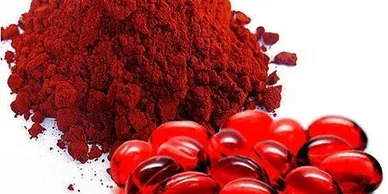
Astaxanthin is a keto-carotenoid within a group of chemical compounds known as terpenes.
Astaxanthin is a metabolite of zeaxanthin and canthaxanthin , containing both hydroxyl and ketone functional groups. It is a lipid-soluble pigment with red coloring properties, which result from the extended chain of conjugated (alternating double and single)
double bonds at the center of the compound. The presence of the hydroxyl functional groups and the
hydrophobic hydrocarbons render the molecule amphiphilic.
Astaxanthin is used as a dietary supplement for human, animal, and aquaculture consumption. Astaxanthin from algae, synthetic and bacterial sources is generally recognized as safe in the United States.[7] The US Food and Drug Administration has approved astaxanthin as a food coloring (or color additive) for specific uses in animal and fish foods.[8] The European Commission considers it as a
food dye with E number E161j.[9] The
European Food Safety Authority has set an
Acceptable Daily Intake of 0.2 mg per kg body weight, as of 2019.[10] As a
food color additive, astaxanthin and astaxanthin dimethyldisuccinate are restricted for use in
Salmonid fish feed only.
Saffron- chemffron
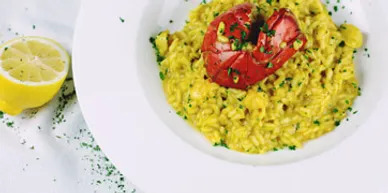
Identifiers
CI Natural Yellow 6
Crocus
Physical Description
Saffron is the dried stigma of the Crocus Sativus plant. It is a reddish-brown or golden yellow powder that has a slightly bitter taste. Crocin and crocetin are the coloring principles of saffron. Together crocin and crocetin are present in the spice saffron at a total concentration of 4-6%. Crocin and crocetin are solids. Crocin is a yellow-orange glycoside that is soluble in hot water, sparingly soluble in absolute alcohol, glycerine, and propylene glycol, and insoluble in vegetable oils. At approximately 186° C, crocin melts with decomposition and has an absorption maxima in methanol at about 464 nm. Crocetin is a dicarboxylic acid that is only slightly soluble in water and most organic solvents although it is soluble in pyridine and similar organic bases as well as in dilute sodium hydroxide. Crocetin forms brick-red rhombs from acetic anhydride that melt with decomposition at about 285°C. Saffron shows good overall performance as a food colorant because it is stable toward light, oxidation, microbiological attack, and changes in pH.
Specifications
Regulatory Approvals
JECFA: Saffron is regarded as a food ingredient rather than an additive thus it is not appropriate to allocate an ADI (29th meeting, 1986).
USA: Saffron is a color additive exempt from certification and permanently listed for food use at GMP (21 CFR 73.500).
EU: Saffron is generally considered a coloring food in the EU, rather than an additive food color. A coloring food is a food ingredient used for coloring purposes.
Safety Reviews
Evaluation of certain food additives and contaminants (29th Report of the Joint FAO/WHO Expert Committee on Food Additives) WHO Technical Report Series No. 733, 1986.
Available online
Caramel Colors- chemfamel

Identifiers
INS No. 150a; Plain caramel, Class I
INS No. 150b; Sulfite caramel, Class II
INS No. 150c; Ammonia caramel, Class III
INS No. 150d; Sulfite ammonia caramel, Class IV
E 150a; Plain caramel
E 150b; Caustic sulphite caramel
E 150c; Ammonia caramel
E 150d; Sulphite ammonia caramel
CAS No. 8028-89-5
Physical Description
Caramel usually occurs as a dark brown to black liquid or solid. It is a complex mixture of compounds, some of which are in the form of colloidal aggregates. Four distinct classes of Caramel can be distinguished by the reactants used in their manufacture and by specific identification tests: Classes I-IV. Class I Caramel is prepared by heating carbohydrates with or without acids or alkalis. Class II Caramel is prepared by heating carbohydrates with or without acids or alkalis in the presence of sulfite compounds. Class III Caramel is prepared by heating carbohydrates with or without acids or alkalis in the presence of ammonium compounds. Class IV Caramel is prepared by heating carbohydrates with or without acids or alkalis in the presence of both sulfite and ammonium compounds.
Common Uses
Caramel color is mostly used in soft drinks and alcoholic beverages. It can also be added to drugs, cosmetics, and food including confectionery, bakery products, dairy products, desserts, meat, seafood, vinegars, sauces, gravies, soups, snack food, fruit preparations, and convenient food.
Specifications
Commission Regulation (EU) No 231/2012
Codex GSFA Provisions
Caramels (INS No. 150) are added to foods and beverages as adopted by the Codex Alimentarius Commission as follows:
Caramel I – plain caramel (INS No. 150a) is included in Table 3, and as such may be used in specific foods under the conditions of good manufacturing practices (GMP) as outlined in the Preamble of the Codex GSFA.
Caramel II – sulfite caramel (INS No. 150b) has MPLs adopted in 5 food categories, with many more draft provisions pending adoption.
Caramel III – ammonia caramel (INS No. 150c) and Caramel IV – sulfite ammonia caramel (INS No. 150d) have MPLs adopted in more than 70 food categories in the GSFA.
Regulatory Approvals
JECFA: JECFA: ADI for Class I of ‘not specified’, ADI for Class III and Class IV of 0-200 mg/kg bw (29th meeting, 1985). ADI of 0 -160 mg/kg bw for Class II (55th meeting, 2000).
USA: Caramel is exempt from certification and may be safely used for coloring foods generally (21 CFR 73.85), for use in drugs generally (21 CFR 73.1085), and for use in cosmetics generally, including those for eye area (21 CFR 73.2085) in amounts consistent with GMP
EU: EU: Group ADI of 300 mg/kg bw/day as well as an individual ADI of 100 mg/kg bw/day for Class III Caramel (EFSA, 2011). EFSA has authorized use and established maximum use levels for caramels (E 150a-d) in specific food and beverage categories.
Safety Reviews
Evaluation of certain food additives and contaminants (55th report of the Joint FAO/WHO Expert Committee on Food Additives). WHO Technical Report Series 901, 2001.
Available online
Evaluation of certain food additives and contaminants (29th report of the Joint FAO/WHO Expert Committee on Food Additives) WHO Technical Report Series 733, 1986.
Available online
EFSA Panel on Food Additives and Nutrient Sources added to Food (ANS); Scientific Opinion on the re-evaluation of caramel colors (E 150a,b,c,d) as food additives. EFSA Journal 2011;9(3):2004 [103 pp.].
Available online
Vollmuth TA. Caramel color safety – An update. Food Chem Toxicology. 2018 Jan; Vol 111: pp 578-596.
Available online
Indigotine-chemfigotine
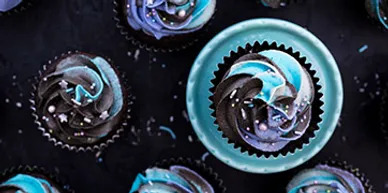
Identifiers
Indigo Carmine
INS No. 132
FD&C Blue No. 2
E 132
CI Food Blue 1
Physical Description
Indigotine occurs as a blue-brown to red-brown powder or as granule. It is an indigoid dye, consisting of a mixture of disodium 3,3′-dioxo-[delta2,2′-biindoline]-5,5′-disulfonate (the principal component), disodium 3,3′-dioxo-[delta2,2′-biindoline]-5,7′-disulfonate (an isomer) and subsidiary coloring matters and may be converted to the corresponding aluminum lake.
Common Uses
Indigotine is distinguished by its rich royal blue color, and can be used for coloring foods and drugs, including dietary supplements, blueberry bagels, breakfast cereals, cakes and cupcakes, candies including chocolate, chewing gum, dairy products, decorations for baking, frozen treats, and sauces and seasonings.
Specifications
Commission Regulation (EU) No 231/2012
Codex GSFA Provisions
Indigotine (INS No. 132) is added to foods and beverages at concentrations up to a maximum permitted level (MPL) as adopted by the Codex Alimentarius Commission. There are more than 50 food categories for which MPLs for indigotine have been adopted in the General Standard for Food Additives.
Regulatory Approvals
JECFA: ADI of 0-5 mg/kg bw (86TH Report, 2019)
USA: FD&C Blue No. 2, along with its aluminum lake (21 CFR 82.102), are a subject to certification and may be safely used for coloring foods (including dietary supplements) generally (21 CFR 74.102) and for coloring ingested drugs (21 CFR 74.1102) in amounts consistent with GMP
EU: ADI of 0-5 mg/kg body weight (EFSA, 2014); EFSA has also established MPLs for use of Indigo carmine in foods and beverages in Europe
Safety Reviews
Safety Evaluation of certain food additives (Eighty-sixth report of the Joint FAO/WHO Expert Committee on Food Additives) WHO Food Additives series no. 77, 2020.
Available online
EFSA ANS Panel (2014) Scientific opinion on the re-evaluation of Indigo Carmine (E 132) as a food additive. EFSA Journal, 12(7), 3768 [51 pp].
Available online
Iron Oxides-chemfiron

Identifiers
INS No. 172(i); Iron oxide, black
INS No. 172(ii); Iron oxide, red
INS No. 172(iii); Iron oxide, yellow
Synthetic iron oxide
E 172; Iron oxides and hydroxides
Physical Description
Synthetic iron oxide consists of any one or any combination of synthetically prepared iron oxides, including the hydrated forms. Iron oxides are produced from ferrous sulfate by heat soaking, removal of water, decomposition, washing, filtration, drying, and grinding. They are produced in either anhydrous or hydrated forms. The range of hues for synthetic iron oxide includes yellows, reds, browns and blacks.
Common Uses
Typical applications include cosmetics, and pharmaceuticals, and foods, including confectionery, cereals, edible ices, sausage casings, dietary supplements, flavored milk and water based drinks, soups and broths, and fruit preparations.
Specifications
JECFA
US FDA
Commission Regulation (EU) No 231/2012
Codex GSFA Provisions
Iron oxides (INS Nos. 172(i-iii)) are added to foods and beverages at concentrations up to maximum permitted levels (MPLs) as established by the Codex Alimentarius Commission and adopted in the General Standard of Food Additives (GSFA). The 32 provisions are defined at the additive group level, and thus apply to the total content of the additives participating in this group: Iron oxide, black (172(i)); Iron oxide, red (172(ii)); and Iron oxide, yellow (172 (iii)).
Regulatory Approvals
JECFA: ADI of 0-0.5 mg/kg body weight (23rd meeting, 1979)
USA: Synthetic iron oxide is exempt from certification and may be safely used in sausage casings intended for human consumption in an amount not exceeding 0.10% by weight of the finished food; in hard and soft candy, mints and chewing gum at levels consistent with GMP; in dietary supplement tablets and capsules, including coatings and printing inks, such that the total amount of elemental iron per day for labeled dosages does not exceed 5 mgs; for the coloring of dog and cat foods in an amount not exceeding 0.25% by weight of the finished food (21 CFR 73.200), to color ingested or topically applied drugs generally, with the amount of elemental iron for ingested drugs not to exceed 5 mg per day (21 CFR 73.1200) and iron oxides are safe for use in coloring cosmetics generally, including cosmetics applied to the area of the eye, in amounts consistent with GMP (21 CFR 73.2250).
EC: No ADI allocated (EFSA, 2015). Maximum levels of iron oxides and hydroxides have been defined in Annex II to Regulation (EC) No 1333/2008 on food additives, as amended. Currently, iron oxides and hydroxides are authorized food additives and permitted to be used in specified foodstuffs at quantum satis.
Safety Reviews
Evaluation of certain food additives (23rd Report of the Joint FAO/WHO Expert Committee on Food Additives) WHO Technical Report Series No 648, 1980.
Available online
Listing of Color Additives Exempt from Certification; Synthetic Iron Oxide, 83 FR 54869 (Nov 1, 2018).
Available online
Listing of Color Additives Exempt from Certification; Synthetic Iron Oxide, 80 FR 14839 (Mar 20, 2015).
Available online
ANS Panel (EFSA Panel on Food Additives and Nutrient Sources added to Food), 2015. Scientific Opinion on the re-evaluation of iron oxides and hydroxides (E 172) as food additives. EFSA Journal 2015;13(12):4317, 57 pp.
Available online